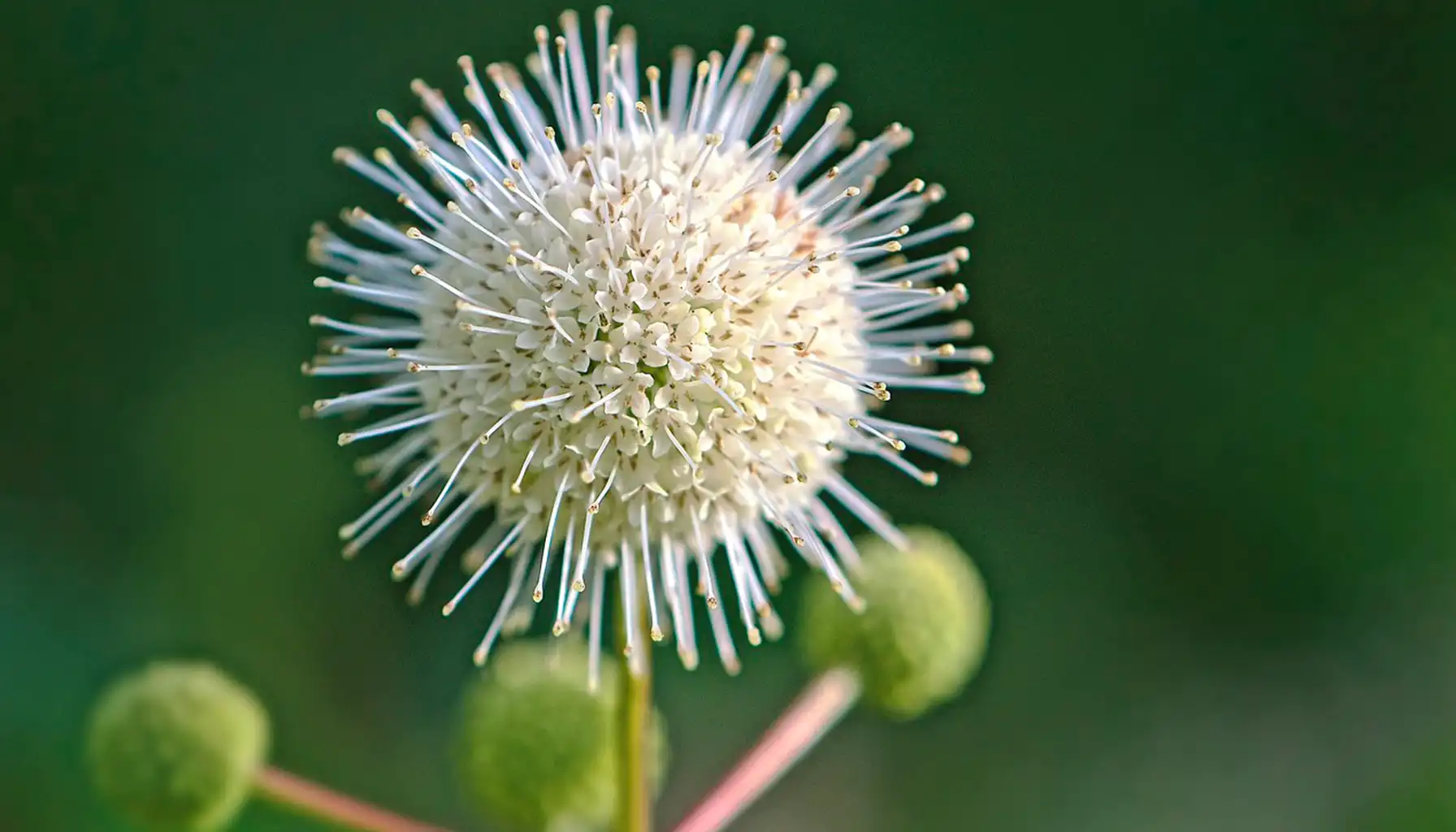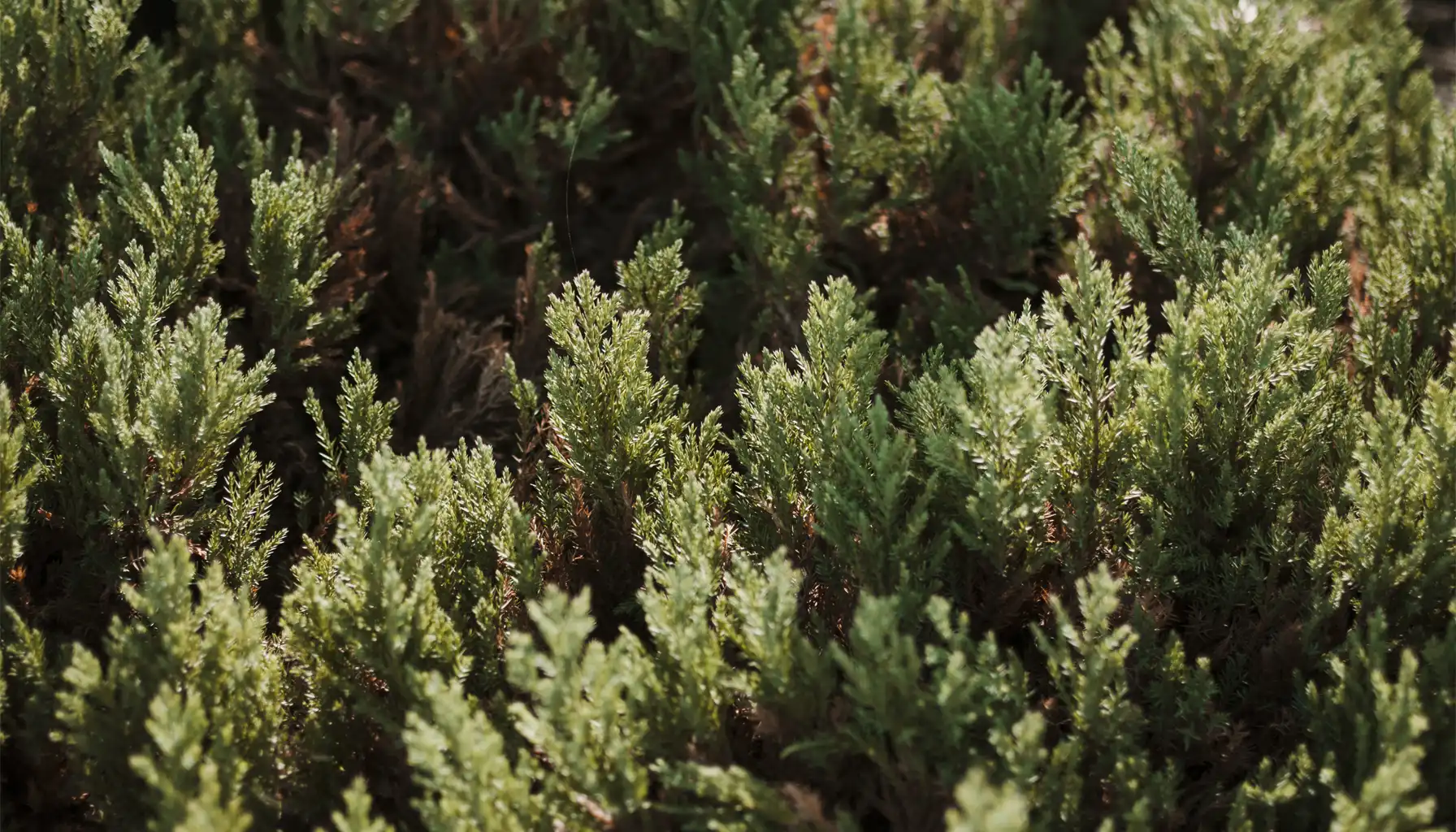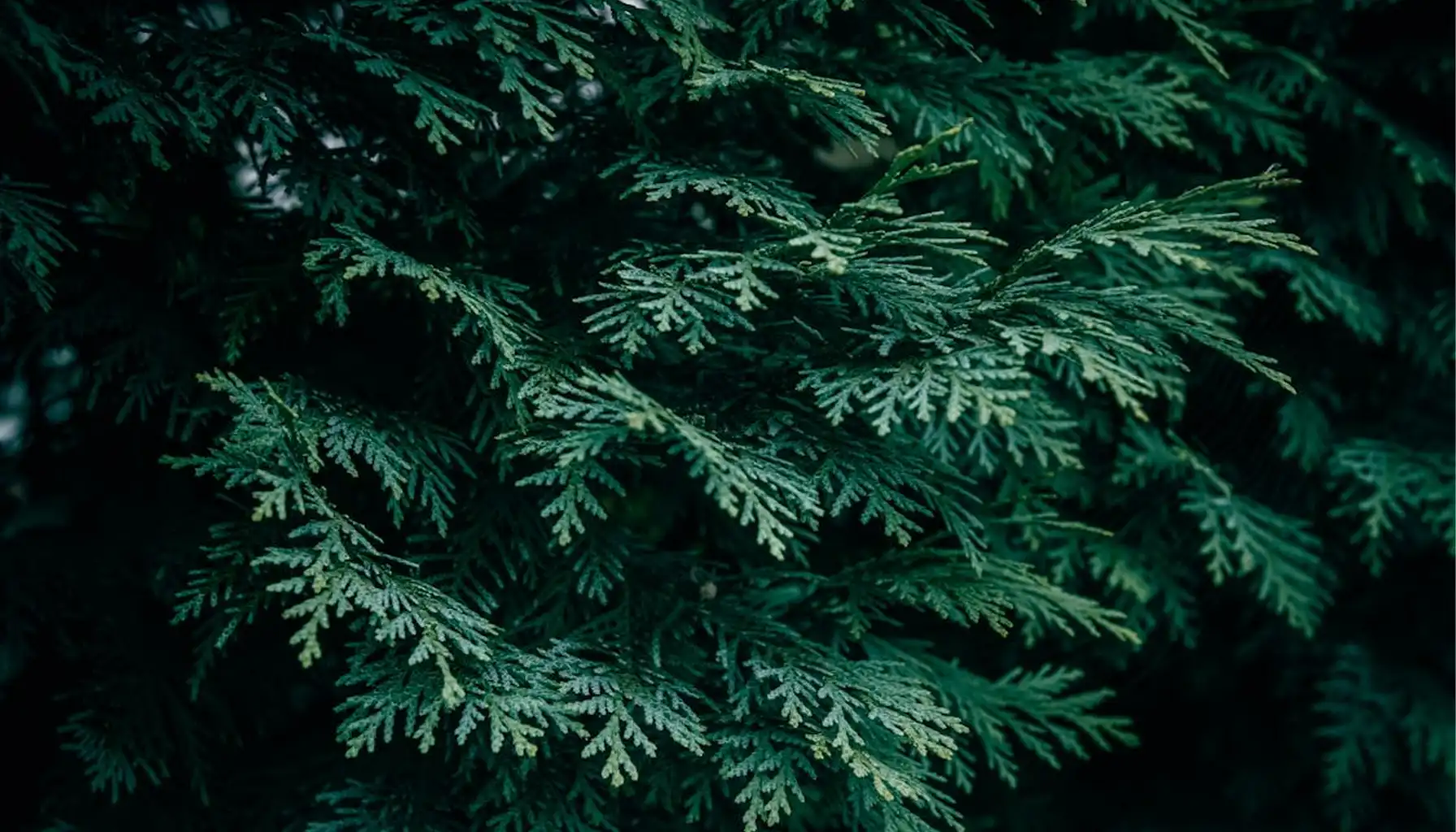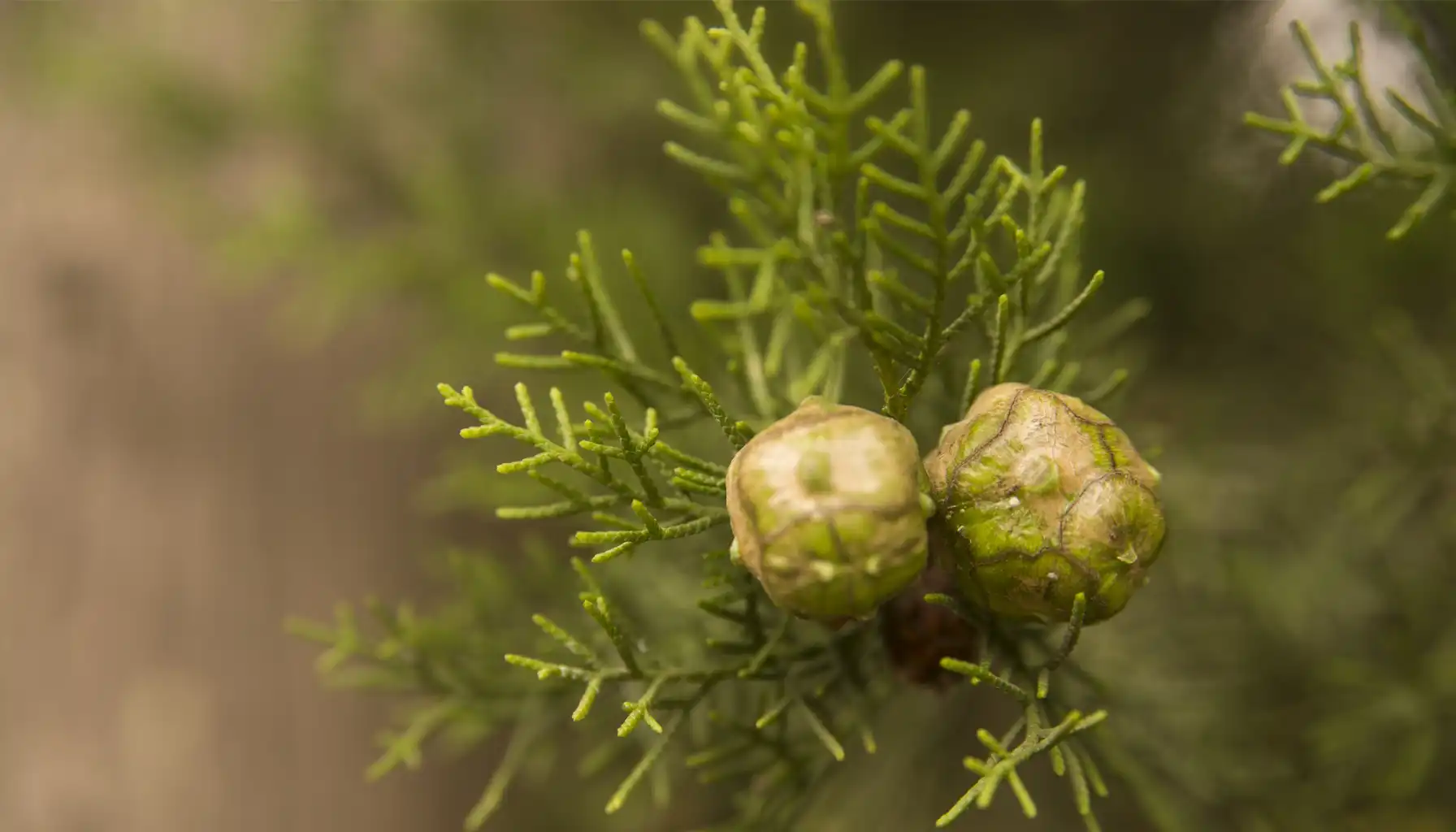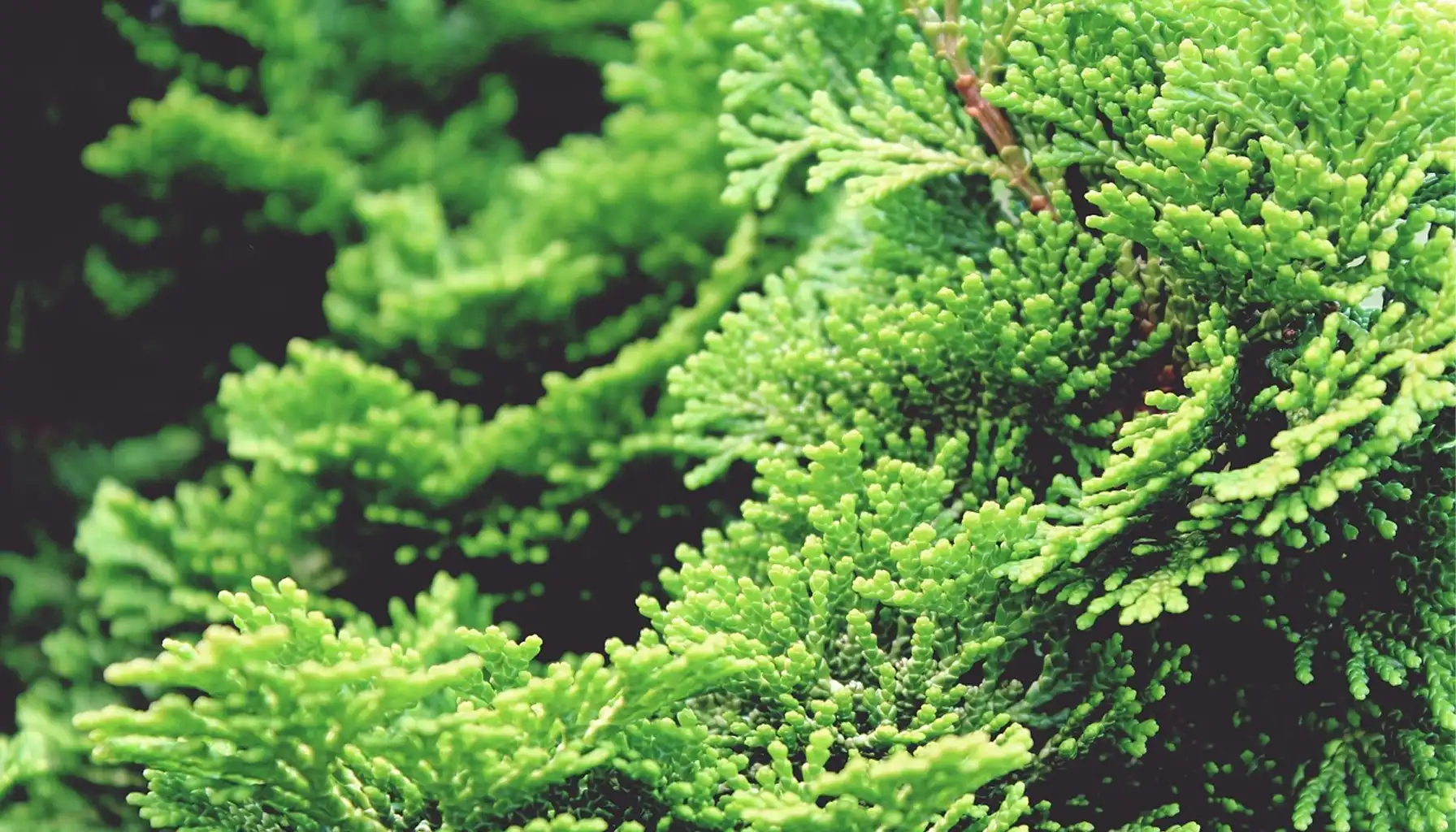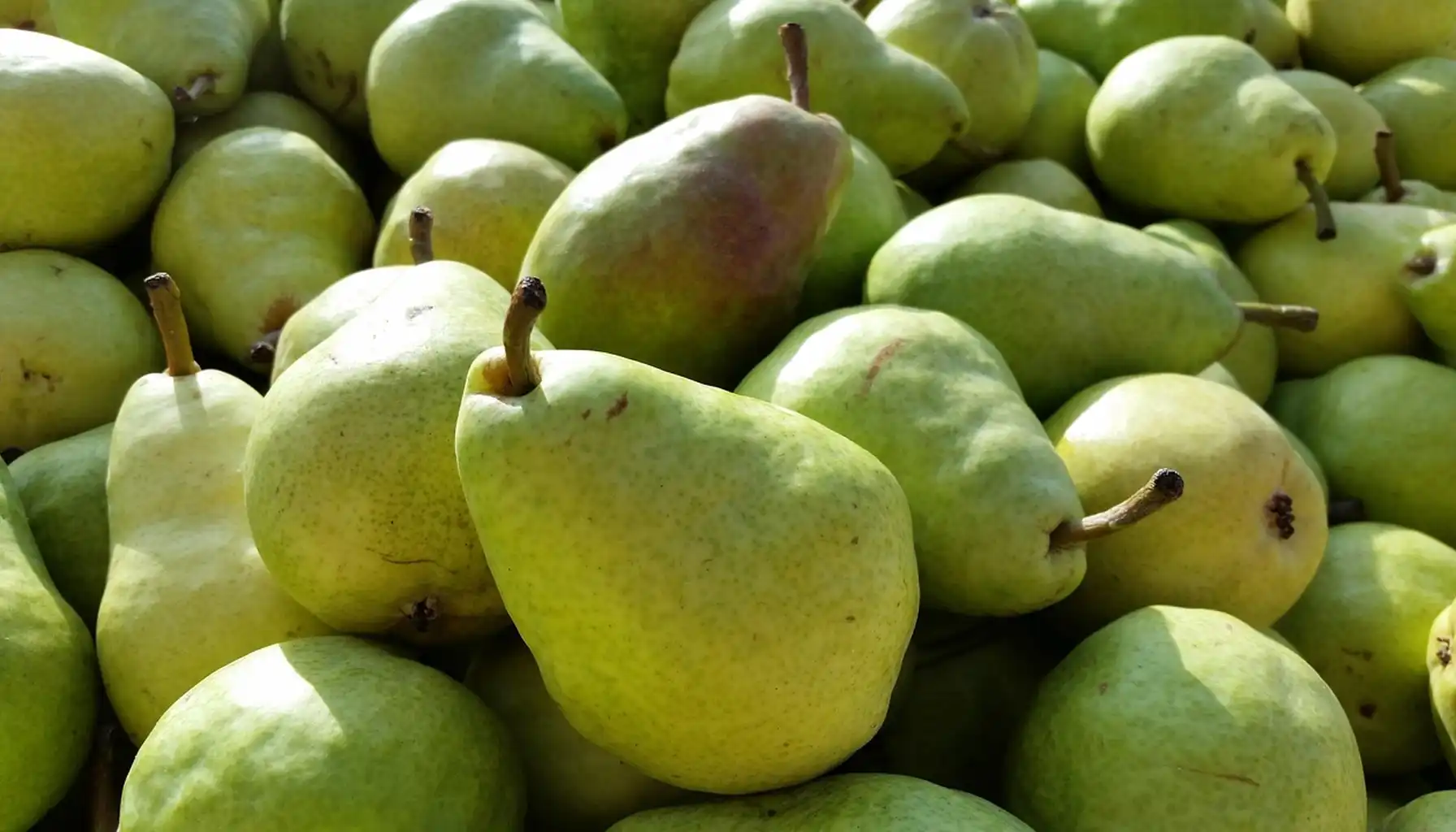It is evergreen, lush and deep-colored foliage guarantees your garden an exquisite look all the year round. Need a natural privacy screen or a windbreaker, want it fast-growing, low to moderate-maintenance? Arizona Cypress trees are definitely the thing you are looking for.
Something unique and large like this one might seem complex at first, but there is nothing to worry about. Let’s see which techniques, rules, and plant identification instruments you’ll need to keep your Arizona Cypress Christmas tree beautiful and healthy.
Botanical and Taxonomic Overview
Scientific name: Hesperocyparis arizonica
Previous classification: Cupressus arizonica
Native habitat: Southwestern United States and northern Mexico, often found in rocky canyons and arid slopes
Growth habit: Evergreen conifer with dense, aromatic foliage
Arizona Cypress size: Typically a full grown Arizona Cypress reaches 40–60 feet tall, occasionally gets taller in optimal conditions
This tree develops a tall conical silhouette with finely textured, scale-like leaves that release a refreshing aroma when crushed. Its bark is another visual highlight—reddish-brown and peeling in narrow strips. Small, rounded seed cones form along the branches, maturing from green to brown. These traits make the tree easy to recognize and highly valued for ornamental landscapes.
With a moderate to fast growth rate, this species can gain 2–3 feet per year under favorable conditions. Such speed allows homeowners to use it as a windbreak or create a privacy Arizona Cypress hedge, both reliable and much more beautiful than a handmade one.
Types and Cultivars
Several cultivars of Cypress tree Arizona have been developed, each offering distinct qualities:
‘Arizona Cypress Blue Ice’ – Features silvery-blue foliage and a narrow, upright form. Popular for ornamental plantings and noted for its fast growth.
‘Carolina Sapphire Arizona Cypress’ – Known for brighter blue foliage and a fuller, bushier habit. Frequently used as a Christmas tree and in large screens.
‘Glabra’ – Distinguished by smoother bark and slightly lighter foliage color.
‘Silver Smoke Arizona Cypress’ – Produces smoky blue-gray leaves with a softer overall texture, excellent for modern garden designs.
Other selections – Regional nurseries often develop cultivars suited to local climates and soil conditions. For example, Raywood’s Weeping Arizona Cypress is called so for its branches hanging downward, forming a beautiful silhouette for certain garden styles.
Popular Types for Every Garden
Cultivar | Foliage Color | Growth Habit | Notable Use |
Blue Ice | Silvery-blue | Upright, narrow | Ornamental highlights |
Carolina Sapphire | Bright blue | Robust, bushy | Screens, Christmas trees |
Glabra | Light green-blue | Conical | General landscaping |
Silver Smoke | Smoky blue-gray | Soft, spreading | Modern xeriscape gardens |
For the perfect choice you should consider your area climate conditions and landscaping preferences. For example, Arizona Cypress Carolina Sapphire tends to grow wider and irregular, while Arizona ‘Blue Ice’ Cypress’ foliage and branches grow densely, forming a strict pyramid.
Pro Tip: If you are looking for something evergreen and unique, a Norfolk Island Pine is a conifer that is worth your attention as well.
Growing Conditions and Planting
Blue Arizona Cypress is admired not only for its beauty but also for its adaptability and drought-tolerance. It thrives in desert areas where other conifers struggle, making it an excellent candidate for challenging sites.
Preferred environment: Full sun is essential for dense foliage and strong growth. A minimum of six hours of direct light daily ensures the best performance.
Soil adaptability: This tree tolerates a wide range of soils, from sandy and rocky to clay-heavy types, as long as drainage is adequate. It prefers neutral to slightly alkaline pH but adapts well to less-than-ideal conditions.
Climate tolerance: Hardy in USDA zones 6–11, full grown Blue Ice Arizona Cypress withstands intense heat and drought once established. It can also endure occasional cold snaps, though young plants may need protection.
Planting tips:
Dig a hole twice as wide as the root ball but no deeper than the Arizona Cypress height.
Space trees 8–12 feet apart for screens and hedges, allowing room for mature growth.
Stake young specimens in windy areas to promote upright form and root stability.
Plant in early spring or fall to give roots time to establish before extreme heat or cold.
Pro Tip: While it is impossible to plant such a tree indoors, you can still consider planting an Arizona Cypress bonsai. Take a look at our bonsai novice guide to help you start the right way.
Dealing with Arizona Cypress Problems, Caring and Maintaining
Arizona Blue Cypress requires relatively little upkeep once established, but proper care in the early years ensures lasting health.
Watering
Young trees: Water regularly during the first two years to help roots establish deeply.
Mature trees: Once established, Blue Pyramid Arizona Cypress is drought-tolerant, needing supplemental watering only during prolonged dry spells.
Fertilization
Apply a balanced, slow-release fertilizer in early spring to encourage vibrant foliage and steady growth.
Avoid over-fertilizing, as excessive nitrogen can lead to weak, lanky branches.
Pruning
Prune lightly to shape the tree or maintain formal hedges.
Remove dead, damaged, or crossing branches after winter.
Avoid heavy pruning into old wood, as regrowth may be slow.
Pest and Disease Resistance
One of the strongest advantages of this species is its natural resistance to pests and diseases. While issues like cypress canker or bagworms may occasionally occur, they are rare. Good air circulation and proper spacing reduce the risk of fungal infections.
Pro Tip: Use the AI Plant Finder to set reminders for watering, pruning, or fertilizing your tall trees, shrubs, and flowers. Its photo-based diagnostic tool also helps detect early signs of stress or pest problems, supporting a proactive approach to tree care.
Landscaping Uses
Arizona Cypress Texas blends ornamental beauty with practical value. Its dense, colorful foliage and rapid growth make it one of the most versatile evergreens for landscaping.
Functional uses: Works as a windbreak, noise buffer, or privacy hedge. In rural or suburban areas, rows of high, dense-foliage trees provide shelter from strong winds and create natural boundaries.
Ornamental roles: A single specimen tree can anchor a lawn or garden, adding bold color year-round. The silvery-blue foliage also contrasts beautifully with flowering shrubs like mulberries or warm-toned stone features.
Companion plants: Pair with lavender, rosemary, or agave for a Mediterranean effect, or with hibiscus and oleander for tropical-inspired landscapes.
Design advice: For formal gardens, plant in evenly spaced rows. In naturalistic settings, group three or five trees for a layered, organic look.
Ecological Benefits
These evergreen trees are a great choice for everyone caring not only about the beauty but also about the impact their garden makes. They can be helpful for the microclimate of your area in many ways:
Soil stabilization: Deep roots help prevent erosion, making it ideal for sloped areas.
Wildlife habitat: Dense foliage provides shelter and nesting sites for birds and small mammals.
Environmental toughness: Tolerates saline soils, resists deer browsing, and adapts well to urban stressors such as pollution and compacted soils.
Buying Guide and Nursery Tips
When searching for a healthy Arizona Cypress for sale, prioritize nursery-grown specimens. They are better adapted to transplanting and less stressed than wild-collected trees.
Checklist for buying healthy plants:
Vibrant blue-green foliage with no browning tips.
Strong central leader and balanced branching.
Firm, well-developed root system.
Best planting time: Early spring or fall, when weather conditions favor root establishment before extremes of summer heat or winter cold.
Frequently Asked Questions
Are there Cypress trees in Arizona?
Yes, they are native to the state, especially in mountainous and canyon areas. You can also meet them in Mexican areas.
How big do Arizona Cypress trees get?
Typically 40–60 feet tall, with some reaching higher under ideal conditions.
What is the best soil for Cypress Arizona?
Well-drained, sandy or rocky soil with neutral to slightly alkaline pH.
Is the Arizona Cypress growth rate fast?
Yes, it grows moderately to quickly, often 2–3 feet per year in good conditions.
How to grow care for an Arizona Cypress?
Plant in full sun, water young trees regularly, prune lightly, and enjoy its drought tolerance once established.
Related AI Plant Finder Posts
